Author: Jacquelyn Buffo MS, LPC
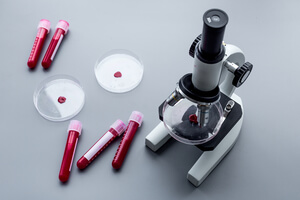 Recent research shows that members of the lesbian, gay, bisexual, and transgender (LGBT) community have higher rates of substance abuse than the general population.1 The use of illicit drugs makes you more susceptible to contracting infectious diseases, such as tuberculosis, as well as sexually transmitted infections such as HIV, hepatitis B, and gonorrhea. Factors that increase your risk include the type of drugs used, the way the drugs are administered (e.g., needle injection), and your sexual activity.2
Recent research shows that members of the lesbian, gay, bisexual, and transgender (LGBT) community have higher rates of substance abuse than the general population.1 The use of illicit drugs makes you more susceptible to contracting infectious diseases, such as tuberculosis, as well as sexually transmitted infections such as HIV, hepatitis B, and gonorrhea. Factors that increase your risk include the type of drugs used, the way the drugs are administered (e.g., needle injection), and your sexual activity.2
Members of the gay community who use drugs can lower their risk of infection by practicing safe sex, using clean needles, getting vaccinated, and avoiding drugs and alcohol in association with sexual activity.
Risks for Contracting Diseases
Members of the LGBT community use substances at higher rates than the heterosexual population.
According to the 2015 National Survey on Drug Use and Health:1
- Adults in the LGBT community were more than twice as likely as heterosexual adults to have used an illicit drug (39.1% to 17.1%).
- 30.7% of lesbian, gay, and bisexual adults used marijuana in 2014-2015, compared to 12.9% of heterosexual adults.
- Roughly 1 in 10, or 10.4%, of lesbian, gay, and bisexual adults misused prescription pain pills, compared to 4.5% of heterosexual adults.
Higher rates of substance use among the LGBT population may be attributed to a reaction to homophobia, violence, or discrimination related to their sexual orientation.3
The use of drugs and alcohol impairs your judgment, which may increase the likelihood of risky sexual behaviors (such as having multiple partners or not using a condom).4 These behaviors, as well as sharing needles and other injection equipment, put you at an increased risk of contracting serious illnesses such as HIV.3
Additional studies have shown that:
- LGBT individuals are at increased risk of contracting STDs, including HIV, due to risky sexual behaviors and intravenous drug use.1
- Methamphetamine abuse raises the risk of contracting or transmitting hepatitis B and C as well as HIV, and methamphetamine abuse is associated with risky behavior among men who have sex with men.5
- Cocaine impairs immune cell function, which can increase the replication of the HIV virus. Many cocaine users with HIV experience advanced progression of the disease.6
The rest of this article will examine some of the specific illnesses that can be contracted or transmitted through drug use among the LGBT community, as well as ways to prevent infection.
How Detrimental Is HIV?
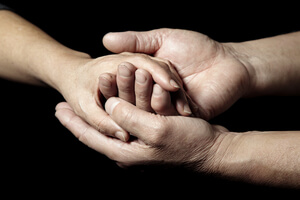 HIV stands for human immunodeficiency virus, which is the virus that can lead to AIDS (acquired immunodeficiency syndrome) if left untreated. HIV is a virus that attacks the body’s immune system, or more specifically, the CD4 cells (T cells) that are responsible for keeping us healthy. When HIV attacks the T cells, it makes it difficult for your body to fight off infections because your immune system is weakened. Certain types of cancers and opportunistic infections are then able to take advantage of your compromised immune system.7
HIV stands for human immunodeficiency virus, which is the virus that can lead to AIDS (acquired immunodeficiency syndrome) if left untreated. HIV is a virus that attacks the body’s immune system, or more specifically, the CD4 cells (T cells) that are responsible for keeping us healthy. When HIV attacks the T cells, it makes it difficult for your body to fight off infections because your immune system is weakened. Certain types of cancers and opportunistic infections are then able to take advantage of your compromised immune system.7
HIV is particularly prevalent among gay and bisexual men who have sex with men. Roughly 67% of people diagnosed with HIV in 2015 in the United States were gay and bisexual men.8
Various Causes
Most gay and bisexual men get HIV by having unprotected anal sex or without consistently using HIV pre-exposure prophylaxis.8
Members of the LGBT population can also contract HIV through intravenous drug use.1 IV use of drugs such as heroin increases the risk of being exposed to the virus through contact with infected blood in shared syringes.4
People under the influence of drugs such as heroin and cocaine may also be more likely to engage in risky sexual behaviors that can expose them to HIV.4
What Are the Symptoms?
People with untreated HIV typically progress through 3 disease stages.
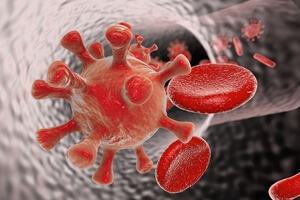 The first stage is called acute HIV infection, and this occurs within 2 to 4 weeks after infection. Some people experience flu-like symptoms that can last for a few weeks. People in this stage of infection may not experience any symptoms, however, despite having a large amount of the virus in their bloodstream, which makes them highly contagious.7
The first stage is called acute HIV infection, and this occurs within 2 to 4 weeks after infection. Some people experience flu-like symptoms that can last for a few weeks. People in this stage of infection may not experience any symptoms, however, despite having a large amount of the virus in their bloodstream, which makes them highly contagious.7
Stage 2 is considered the clinical latency stage. This is often called chronic HIV infection, where the virus is active but reproduces at very low levels, meaning a person may not have any symptoms or illness. Treatment with medications at this stage can influence how the illness progresses. If a person takes antiretroviral therapy (ART), this phase can last many decades. ART can lower levels of virus in the blood to the point that that the person is less likely to transmit the virus to another person.7
Stage 3 is the most severe progression of HIV infection. People at stage 3 have AIDS and have such extensively compromised immune systems that they often develop several severe, opportunistic illnesses (e.g., pneumocystis pneumonia, toxoplasmosis, etc.). People in this stage may experience chills, swollen lymph glands, fever, sweats, and weight loss. Without medication, individuals with AIDS may survive, on average, for 3 years.7
Are There Any Options for Treatment?
Unfortunately, there is no known cure for HIV. ART is the main treatment for HIV/AIDS. If the virus becomes undetectable through the use of ART, the person has virtually no risk of spreading HIV to another person, and they can live a long, healthy life.7
Other STDs You Might Be at Risk For
Other STDs prevalent in the LGBT community include syphilis, gonorrhea, chlamydia, and HPV. Having a symptomatic STD can further increase your chances of acquiring HIV through unprotected sex.9
What Is Syphilis?
 Syphilis is a bacterial infection that you can acquire through a cut in the skin or by contact with another person’s syphilis lesion, usually during sexual contact.9, 10 If left untreated, syphilis can cause significant damage to vital organs. Complications can include damage to the heart, nervous system, brain, and death.10
Syphilis is a bacterial infection that you can acquire through a cut in the skin or by contact with another person’s syphilis lesion, usually during sexual contact.9, 10 If left untreated, syphilis can cause significant damage to vital organs. Complications can include damage to the heart, nervous system, brain, and death.10
Symptoms often progress through 3 stages.
- In the primary stage, an often-painless sore or chancre appears and then goes away within 3-6 weeks.9
- If syphilis is left untreated, people may progress to stage 2. As the primary syphilis chancre heals, or sometimes weeks after it has resolved, you may begin to develop flu-like symptoms, a rash on your hands and feet, and flat, warty genital lesions.9
- In stage 3, your rash and other symptoms may go away. However, the virus is still present in your system and can damage the heart, brain, and nervous system.10
Treatment for syphilis includes antibiotics. Both partners must be treated and avoid sex until the sores are healed.10
How Gonorrhea and Chlamydia Are Spread
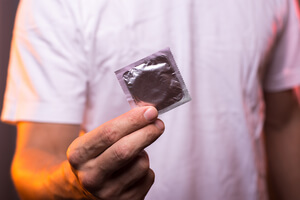 Gonorrhea and chlamydia are both bacterial infections of the genital region. Both are spread through oral, anal, and vaginal sex.10
Gonorrhea and chlamydia are both bacterial infections of the genital region. Both are spread through oral, anal, and vaginal sex.10
People with chlamydia may not have any symptoms. However, if you are a woman and have chlamydia, you can experience vaginal discharge, burning, painful urination, and bleeding. If you are male, you may experience discharge, itching, or burning and pain when urinating.10
Gonorrhea infections may also not cause any symptoms. But they are sometimes associated with burning upon urination, as well as vaginal or penile discharge. Women can have vaginal bleeding or pelvic pain, and men may have painful or swollen testicles.10
If left untreated, both gonorrhea and chlamydia can cause pelvic inflammatory disease (PID) in women, which can increase the risk of infertility and ectopic pregnancy. Men can develop a painful condition called epididymitis, which can lead to infertility. Babies born with either disease can develop eye infections, and babies born to infected moms with chlamydia can develop lung infections.10
Both conditions are treated with oral antibiotics that cure the infection. Both sexual partners must be treated at the same time to avoid passing the infection back and forth, and they should avoid sex until the infection is completely gone.10
The Dangers of HPV
HPV, also known as human papillomavirus, is a viral infection with more than 40 subtypes that can affect the genitals. Papillomaviruses can be transmitted through oral, anal, and vaginal sex.10
Symptoms can be severe and uncomfortable, but often there are no symptoms at all. Genital warts can develop in association with some types of HPV. Other HPV subtypes are associated with certain cancers, which are frequently asymptomatic until advanced stages. Babies born to women with HPV can develop warts in their throat, and adults can develop cervical and anal cancer if the infection goes untreated for many years.10
There is no cure—only topical treatments for wart removal. Even after the warts are removed, they can come back.10
Hepatitis and the Different Types
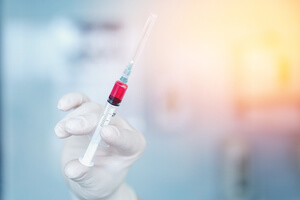 Infection with the various hepatitis viruses can result in severe liver inflammation. The three most common types of infection are caused by viruses known as hepatitis A, hepatitis B, and hepatitis C. While there are some commonalities among these 3 types, they are distinctive in how they are spread.11
Infection with the various hepatitis viruses can result in severe liver inflammation. The three most common types of infection are caused by viruses known as hepatitis A, hepatitis B, and hepatitis C. While there are some commonalities among these 3 types, they are distinctive in how they are spread.11
Symptoms of viral hepatitis can include:11
- Jaundice (yellowing of the skin and whites of the eyes).
- Loss of appetite.
- Fatigue.
- Joint pain.
- Fever.
- Dark urine.
- Nausea.
- Diarrhea.
- Vomiting.
- Abdominal pain.
Viral hepatitis can lead to liver failure or death. Treatment recommendations for all types of viral hepatitis include avoiding the use of alcohol. Vaccinations for hepatitis A and hepatitis B can prevent infection from these two virus types.11
Hepatitis A
Hepatitis A (HAV) is found in human feces and is usually spread through close contact, whether it be through sex or by living in the same household and sharing food or water. If you travel to areas of the world where HAV is prevalent, you may be at risk of catching the virus. Once you catch hepatitis A, you can’t catch it again.11
There is no treatment for this type of hepatitis—only managing symptoms. Fifteen out of 100 people infected will have a long-term illness or recurring symptoms over a 6- to 9-month timespan.11
Hepatitis B
Hepatitis B (HBV) is found in bodily fluids and blood, and can be spread through unprotected sex, sharing needles during drug use, or exposure to sharps (needles and other sharp objects) on the worksite.11
There is no cure—only medications that help slow the progression of the disease.11
Medications may prevent serious liver issues in up to 40% of people. However, between 2,000 to 4,000 people die each year in the U.S. from the disease. Chronic liver disease, liver cancer, liver failure, and death are possible, especially if the disease is left untreated. Death from chronic liver disease occurs in 15% to 25% of infected people. A liver transplant may be used in cases of severe liver disease.11
Hepatitis C
Symptoms of hepatitis include jaundice, loss of appetite, and fatigue.
Hepatitis C (HCV) is found in bodily fluids and blood and is spread through exposure to sharps, sharing needles, or from a mother to her baby during birth. Sex is an uncommon method of transmission.11
There is no medication to treat recently acquired HCV. But chronic HCV can be treated with medications. People who have the infection should be checked for liver disease every 6-12 months. Seventy-five percent to 85% of newly infected people develop chronic infection, and 70% of chronically infected people develop liver disease. People who have a chronic infection are at a higher risk of liver failure and liver cancer. About 8,000 to 10,000 people die every year from HCV.11
What Other Infections Are There?
Infective endocarditis (IE) is an inflammation of the endocardium, which is a membrane that lines the chambers of the heart. It has been recognized as a consequence of IV drug use as far back as the 1950s. IE is more common in HIV-infected IV drug users than IV drug users who do not have HIV.12,13
IE is most commonly caused by bloodborne bacteria and can ultimately result in damaged heart valves, if not treated effectively.13
Symptoms include:13
- Fever.
- Shortness of breath.
- Weight loss.
- Tiny red spots on your skin.
- Buildup of fluid on your arms or legs.
IE is treatable with high-dose antibiotics, but some people may require surgery.13
Tuberculosis (TB) is a disease caused by mycobacteria that can infect various parts of the body, but often attack the lungs. It is spread through the air by a person coughing, sneezing, or speaking.14 Drug use has been associated with a higher incidence of TB infection.15
Symptoms of TB can include:14
- A bad cough that lasts at least 3 weeks or longer.
- Low appetite.
- Weight loss.
- Coughing up blood or mucus.
- Weakness.
- Sweating at night.
- Fever.
TB is usually treated with a combination of several medications taken over an extended period of time. It can be fatal if untreated.14
Addiction Treatment and Specialized Care
 Treatment for substance use can help prevent HIV transmission among high-risk populations. In addition to reduced drug use, treatment for substance use disorders is associated with less risky sexual behavior among men who have sex with men.1
Treatment for substance use can help prevent HIV transmission among high-risk populations. In addition to reduced drug use, treatment for substance use disorders is associated with less risky sexual behavior among men who have sex with men.1
Addiction treatment often begins with a period of detoxification to rid your body of drugs and toxins. Once you are medically stable, you may move on to formal treatment that could include a combination of behavioral therapy and medication.
Treatment plans can be tailored to your individual needs. If you are a member of the LGBT population, research shows you could benefit from specialized treatment that addresses unique factors such as homophobia/transphobia, violence, family issues, and social isolation that are commonly experienced by members of your group.1
Specific therapies have been particularly effective for bisexual or gay men include social support therapy, motivational interviewing, cognitive behavioral therapy (CBT), and contingency management.1
Additional statistics on addiction treatment and the LGBT community show that:1
- Transgender individuals are more likely to seek treatment for addiction than the non-transgendered population.
- Addiction treatment programs offering specialized groups for bisexual and gay men show better outcomes for those clients.
- Approximately 7.4% of treatment programs offer specialized services for LGBT patients.
Preventative Steps to Take
There are specific things you can do to reduce or even prevent your risk of contracting certain infectious diseases. They include the following:16
- Use condoms when engaging in any type of sexual intercourse.
- Get tested for HIV at least once a year.
- Get tested regularly for other infections so you can treat them as soon as possible.
- Get vaccinated against HAV and HBV.
- Get vaccinated for HPV if you are 26 years old or younger.
- Talk honestly with your partner about STDs and getting tested before you engage in sexual intercourse.
- Avoid mixing drugs and alcohol with sex to increase the likelihood you will exercise good judgment and not engage in risky sexual behavior.
- Limiting the number of sexual partners.
- Talk to your doctor about PrEP, which is an HIV-prevention option for people who are at a high risk of becoming infected with HIV.8
- Use clean needles during intravenous drug use by taking advantage of a needle exchange program.
Needle exchange programs provide places for people to dispose of syringes and needles as well as obtain clean needles for free. According to the Centers for Disease Control and Prevention, there are currently 35 states as well as the District of Columbia that have such programs.17
If you or someone you know is struggling with drug use and may be at risk of an STD or other disease, reach out for help today. There are rehab centers around the country that can help you overcome your addiction and learn how to live a drug-free life.
Sources
-
1. National Institute on Drug Abuse. (2017). Substance use and SUDs in LGBT populations.
2. Celentano, D., Latimore, A., and Mehta, S. (2010). Variations in sexual risks in drug users: Emerging themes in a behavioral context. Current HIV/AIDS Reports, 5(4), 212-218.
3. Centers for Disease Control and Prevention. (2016). Substance use.
4. National Institute on Drug Abuse. (2018). Heroin.
5. National Institute on Drug Abuse. (2013). Methamphetamine.
6. National Institute on Drug Abuse. (2016). Cocaine.
7. Centers for Disease Control and Prevention. (2018). About HIV/AIDS.
8. U.S. Department of Health and Human Services. (2018). HIV and gay and bisexual men.
9. The American College of Obstetricians and Gynecologists. (2016). Chlamydia, Gonorrhea, and Syphilis.
10. UCLA. (nd). Common STD facts.
11. Immunization Action Coalition. (nd). Hepatitis A, B, and C: Learn the differences.
12. Sexton, D., and Chu, V.H. (2017). Infective endocarditis in injection drug users. UpToDate.
13. U.S. National Library of Medicine. (2016). Endocarditis.
14. U.S. National Library of Medicine. (2018). Tuberculosis.
15. Deiss, R.G., Garfein, R.S., and Rodwell, T.C. (2011). Tuberculosis and drug use: Review and update. Clinical Infectious Diseases, 48(1).
16. Centers for Disease Control and Prevention. (2016). Sexually transmitted diseases.
17. Centers for Disease Control and Prevention. (2018). Syringe service program determination of need.
